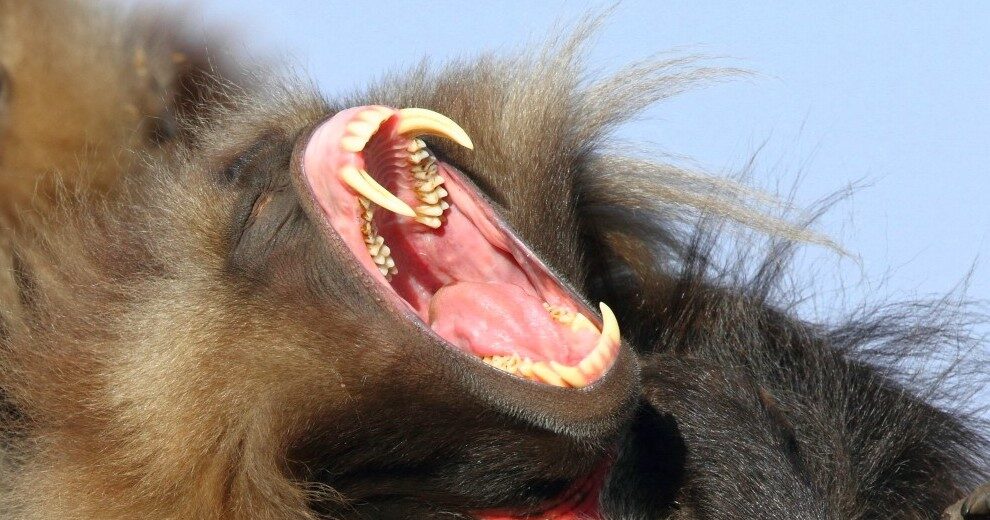
Being the last remaining members of a once thriving species of primates, the gelada (pronounced jeh-lah-da) are 200,000 strong and take up residence in the Ethiopian highlands. They are primarily herbivorous (eat mainly plant matter) grass eaters that live in troops of 1 alpha male with 3 – 6 females in a harem. The IUCN lists these critters are Vulnerable. Their populations are also decreasing, due to habitat destruction, hunting, trapping, and climate change.
First the Stats…
Scientific name: Theropithecus gelada
Weight: Females: Up to 44 lbs.
Length: Up to 30 inches, plus a 20 inch tail
Lifespan: Up to 30 years
Now on to the Facts!
1.) These primates are sexually dimorphic (Males and females look different), as males are quite a bit larger than females.
2.) They spend almost all of their time on the ground. They are the world’s most terrestrial non-human primate. The only other being humans.
3.) Sometimes geladas form large troops of up to 1,200 individuals. These are some of the largest groups observed among any of the primates!
4.) Being double fisted eaters, a gelada baboon will eat, while sitting, with both hands at once.
5.) The gelada have opposable thumbs, like most other primates.
But wait, there’s more on the gelada!
6.) They are sometimes found in association with baboons but never with vervets, as their territories do sympatrically (occupying geographical ranges that at least partially overlap without interbreeding) overlap.
7.) Dogs, jackals, leopards, servals, foxes, and hyenas make up the majority of their predators.
Did you know…?
These monkeys typically run from danger, but males have been observed confronting dogs and even mobbing and surrounding a leopard, in rare displays of courage!
8.) If a rogue male should appear to challenge a dominant male, a fight will ensue with teeth being bared and even other geladas will join in to chase away the rival male!
9.) Geladas are also called lion baboons. Even though they are not true baboons.
10.) During estrus (when the female is ready to mate), the receptive females will display a red butt and chest.
Now a Short Gelada Video!
Also, check out the Critter Science YouTube channel. Videos added frequently!
Want to suggest a critter for me to write about? Let me know here.



